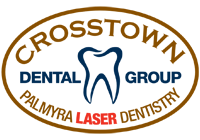The Right Toothbrush and Toothpaste: How to Choose
Selecting the right toothbrush and toothpaste is essential for maintaining good oral hygiene. With numerous options available, it can be overwhelming to choose the best products for your needs. Here’s a guide to help you make informed decisions about your toothbrush and toothpaste, ensuring optimal dental health.
 Choosing the Right Toothbrush
Choosing the Right Toothbrush
- Bristle Type:
- Soft Bristles: Most dentists recommend a toothbrush with soft bristles. They are gentle on the gums and effective at cleaning teeth without causing damage to enamel or irritating sensitive gums.
- Medium and Hard Bristles: Medium and hard bristles can be too abrasive, especially for those with sensitive teeth or gum conditions. They may cause enamel erosion and gum recession over time.
- Toothbrush Head Size:
- Small Head: A smaller toothbrush head can reach back teeth more easily and is ideal for individuals with smaller mouths or those who need extra precision.
- Large Head: A larger head covers more surface area but may be less effective at reaching tight spaces between teeth.
- Handle Design:
- Ergonomic Handles: Look for a toothbrush with a comfortable, non-slip handle that fits well in your hand. Ergonomic designs make brushing easier and more effective.
- Manual vs. Electric:
- Manual Toothbrushes: These are affordable and effective when used with proper technique. They come in various designs and bristle types.
- Electric Toothbrushes: They can be more effective at removing plaque and reducing gingivitis, especially with oscillating or rotating heads. They are also beneficial for individuals with limited manual dexterity.
Choosing the Right Toothpaste
- Fluoride Content:
- Fluoride Toothpaste: Fluoride helps strengthen tooth enamel and prevent cavities. Most dentists recommend using fluoride toothpaste to protect against decay.
- Specific Needs:
- Sensitive Teeth: Toothpastes formulated for sensitive teeth contain ingredients like potassium nitrate or strontium chloride to reduce sensitivity and provide relief.
- Whitening Toothpaste: These toothpastes contain mild abrasives or chemical agents that help remove surface stains and brighten teeth. They are not a substitute for professional whitening treatments but can be part of a whitening routine.
- Gum Health:
- Anti-Gingivitis Toothpaste: For individuals with gum issues, toothpaste with antibacterial agents like triclosan or stannous fluoride can help reduce gum inflammation and fight gingivitis.
- Natural Options:
- Natural Toothpaste: If you prefer products with fewer chemicals, look for natural toothpastes that use plant-based ingredients and are free from artificial sweeteners and dyes.
Brushing with the Right Choice
Choosing the right toothbrush and toothpaste involves considering your specific oral health needs and preferences. Opt for a soft-bristled toothbrush with a comfortable handle and choose a toothpaste with fluoride that addresses your particular dental concerns. Whether you prefer a manual or electric toothbrush, and whether you need a sensitivity or whitening toothpaste, selecting the right products will help maintain your oral health and ensure a brighter, healthier smile. And be sure to schedule your professional dental cleanings every six months.



